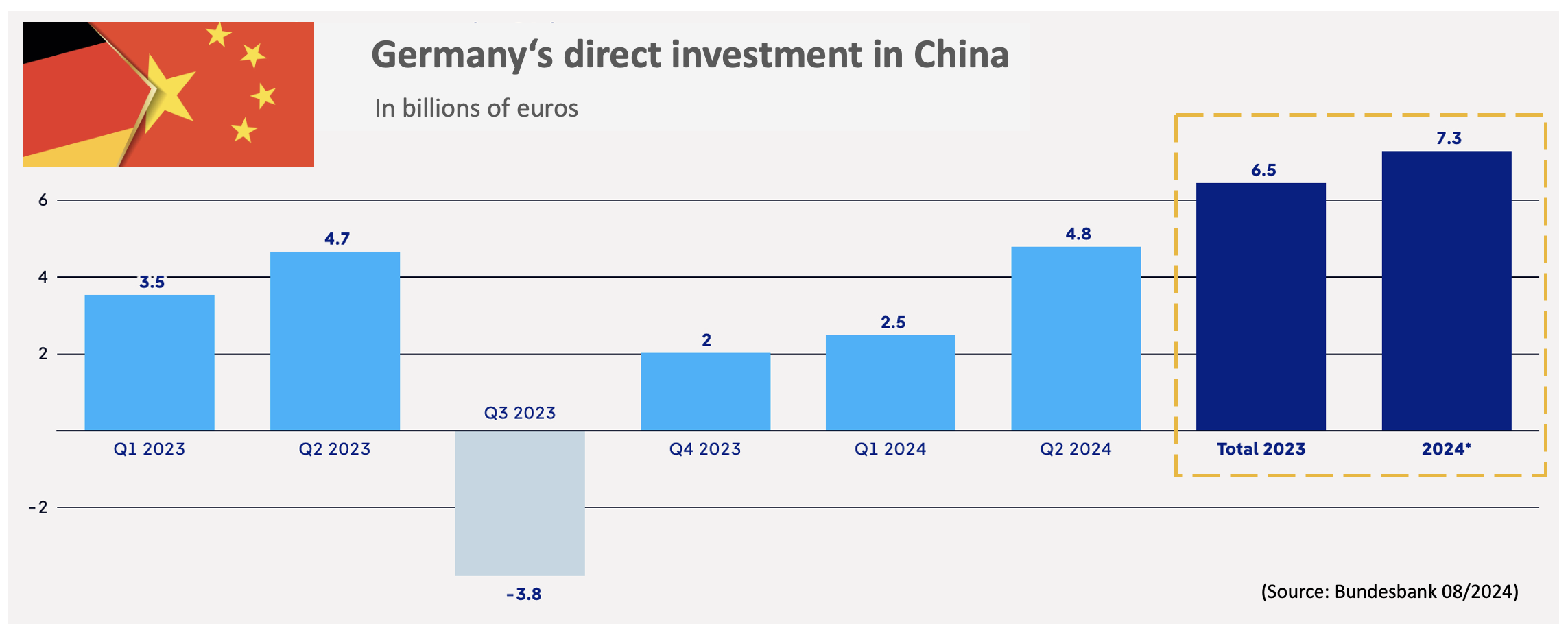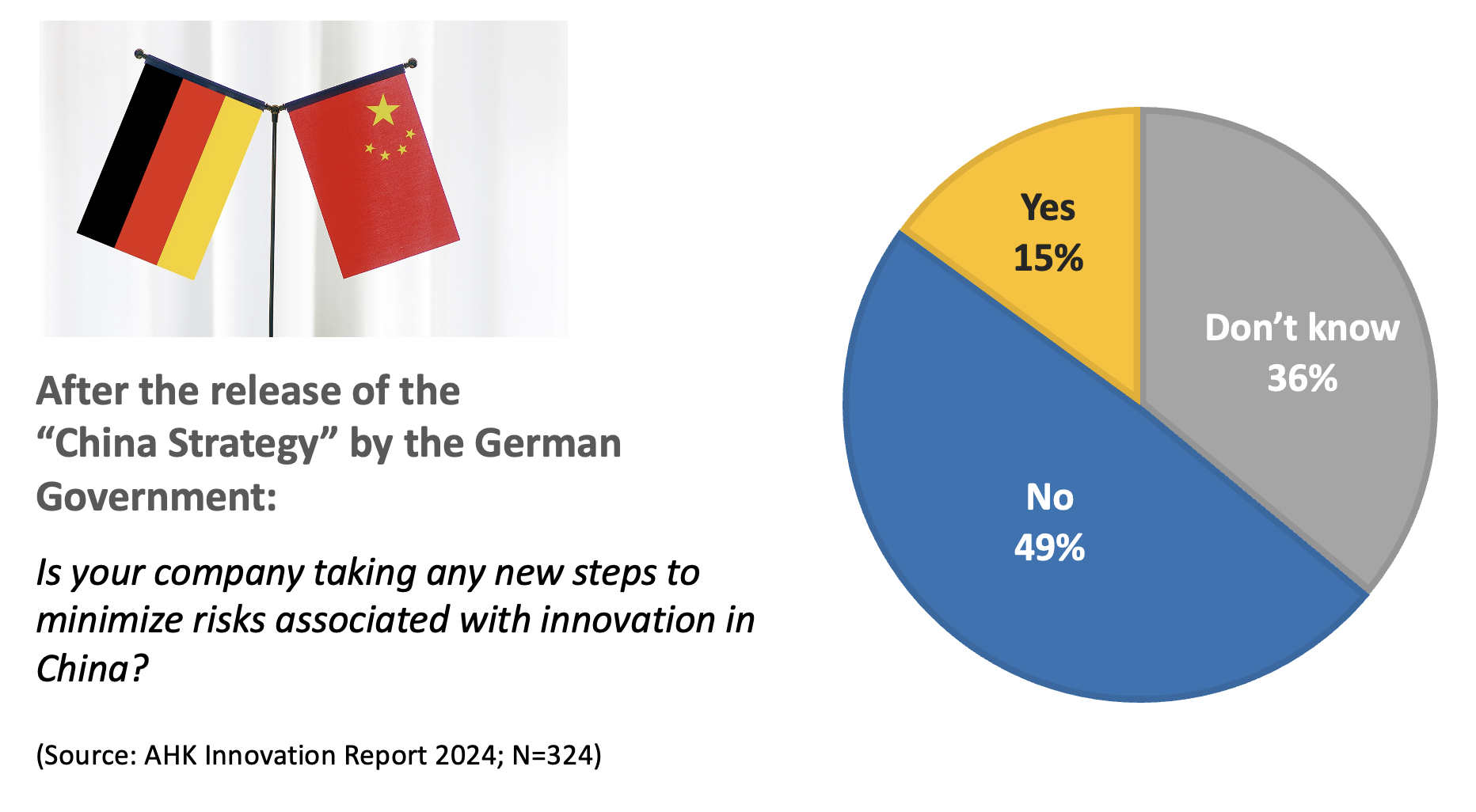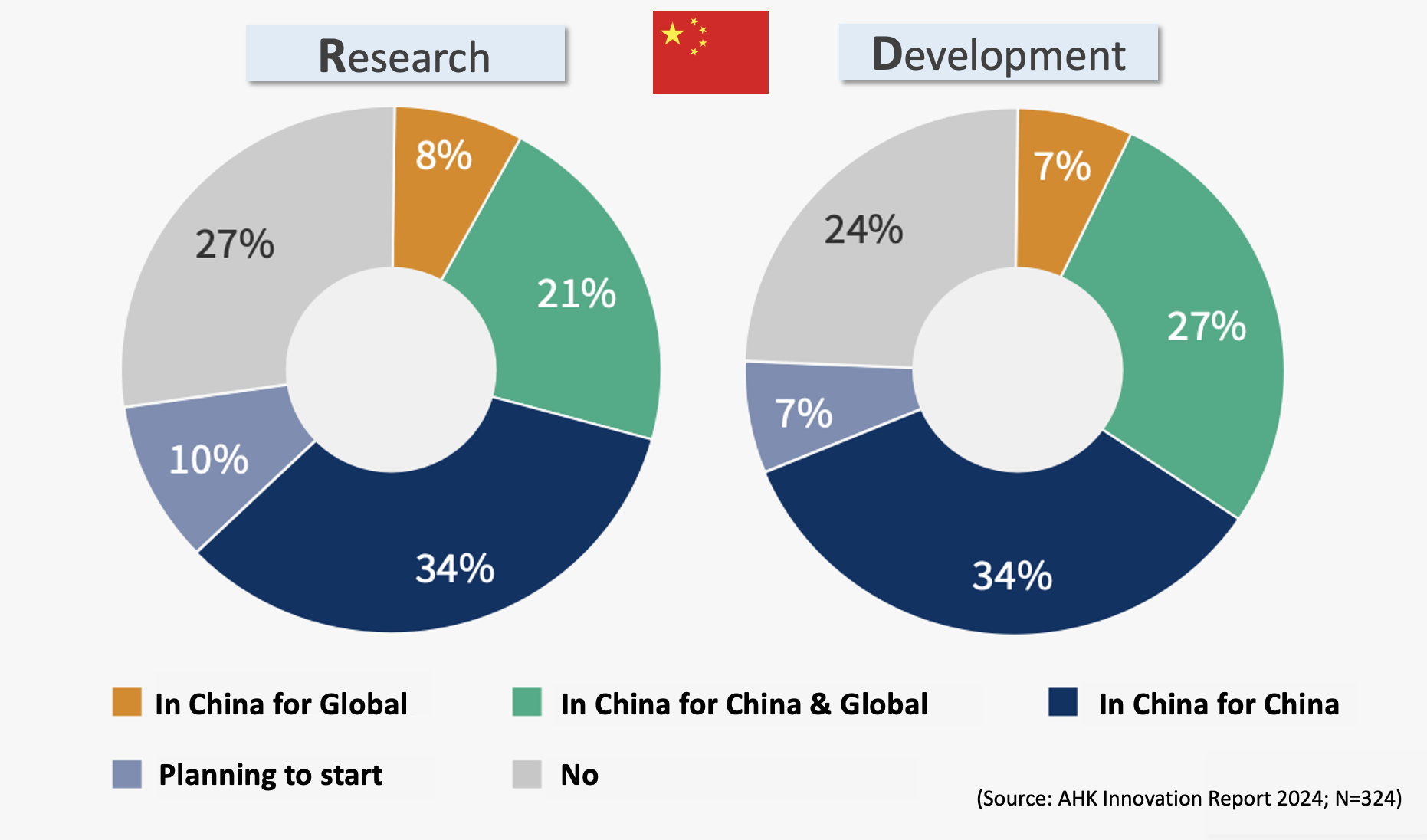Fachwissen für den Mittelstand
Der VBU Blog
Lernen Sie unsere Experten und Autoren kennen. Fachwissen für den Mittelstand.
4 Minuten Lesezeit
(702 Worte)
China: From "World’s Factory" to Global R&D Powerhouse
China has long been known as the “world’s factory,” a manufacturing powerhouse, and a key market for global companies. However, its emerging role as a global R&D hub is less frequently discussed. In recent years, China has been positioning itself as a leading innovation center, attracting substantial R&D investments from multinational corporations.
Surge in Foreign R&D Investment
Regardless of the slowdown in China’s economic growth and mounting geopolitical tensions that have led companies to diversify away from Chinese supply chains, many global CEOs are keen to protect their R&D activities in China, viewing the country's innovation ecosystem as vital to their companies' future growth and global strategy. When combined with domestic investments, China’s total R&D expenditure now matches that of Europe, second only to the U.S. in global R&D spending by companies.
- Two-decade Critical Technology Tracker: The rewards of long-term research investment (ASPI 08/2024)
-
China Is Rapidly Becoming a Leading Innovator in Advanced Industries (ITIF 09/2024)
Between 2012 and 2021, foreign companies significantly ramped up their R&D efforts in China. The number of research personnel hired by these firms increased by 20%, reaching a total of 716,000. During the same period, their annual R&D spending in China nearly doubled to 338 billion yuan ($52 billion). Even the disruptions caused by strict COVID-19 lockdowns in 2022 didn’t slow down this trend. That year, 25 new foreign R&D centers were established in Shanghai alone. While foreign direct investment (FDI) in China dropped by 80% overall, FDI in R&D grew by 4%.
German Firms Localize R&D for Competitive Edge in China
German firms, in particular, are intensifying their R&D localization in China despite Germany’s "China Strategy," which emphasizes de-risking and diversification. Facing geopolitical challenges and the rising capabilities of Chinese competitors, these companies are doubling down on local innovation to accelerate product development and enhance competitiveness.


A 2024 survey by the German Chamber of Commerce in China revealed that 63% of German companies conduct research in China, with nearly 69% involved in product development. Many have adopted "In China for China" (34%) or "In China for China and Global" (21%) strategies, while 8% conduct R&D solely for global markets from China.

German firms cite increased product competitiveness as the top reason for R&D investment in China (64%), followed by access to new or existing markets (62%) and enhanced brand recognition (52%). However, they also recognize the advantages held by local competitors, with 56% acknowledging that Chinese firms have a faster time-to-market, and 40% noting that they better leverage local resources. Despite these challenges, 80% of German companies believe they have a better or equal understanding of customer needs compared to their Chinese counterparts.
Challenges of Conducting R&D in China
While China offers significant R&D opportunities, foreign companies must navigate a complex landscape. On the one hand, China is working to modernize its economy and attract foreign investment. On the other, it enforces stricter national security laws and regulations around cybersecurity and data management, creating uncertainties, particularly for companies handling sensitive technologies. Intellectual property protection remains a concern, especially when partnering with local companies. In addition, Chinese companies -especially state-owned enterprises (SOEs) - benefit from preferential treatment, such as easier access to funding. China's "Dual Circulation" strategy, which aims to reduce reliance on foreign tech and boost domestic demand, could marginalize foreign R&D efforts as the country focuses on fostering homegrown innovation. Geopolitical tensions, particularly between China and the U.S., add another layer of complexity. Trade disputes, export controls, and sanctions can disrupt R&D activities, particularly when sourcing critical components or sharing technologies.
China presents significant opportunities for R&D investment, but foreign companies must navigate regulatory uncertainties, competitive pressures, and geopolitical risks. A strategic approach - balancing risk mitigation with capitalizing on China’s dynamic innovation landscape - is key to succeeding in this evolving environment.
DIRK MÜLLER (MBA; Dipl.-Pol. International Relations)
VBU Partner in Shanghai/China
China Update (pdf) & China Update LinkedIn-Newsletter
Header Photo: D. Mueller
Bleiben Sie auf dem Laufenden
Wenn Sie den Blog abonnieren, senden wir Ihnen eine E-Mail, wenn es neue Updates auf der Website gibt, damit Sie sie nicht verpassen.
Kontakt
Verbund beratender Unternehmer e.V.
Adenauerallee 12-14
53113 Bonn
Telefon: +49 228 966985-19
E-Mail: vorstand@vbu-berater.de


Kommentare